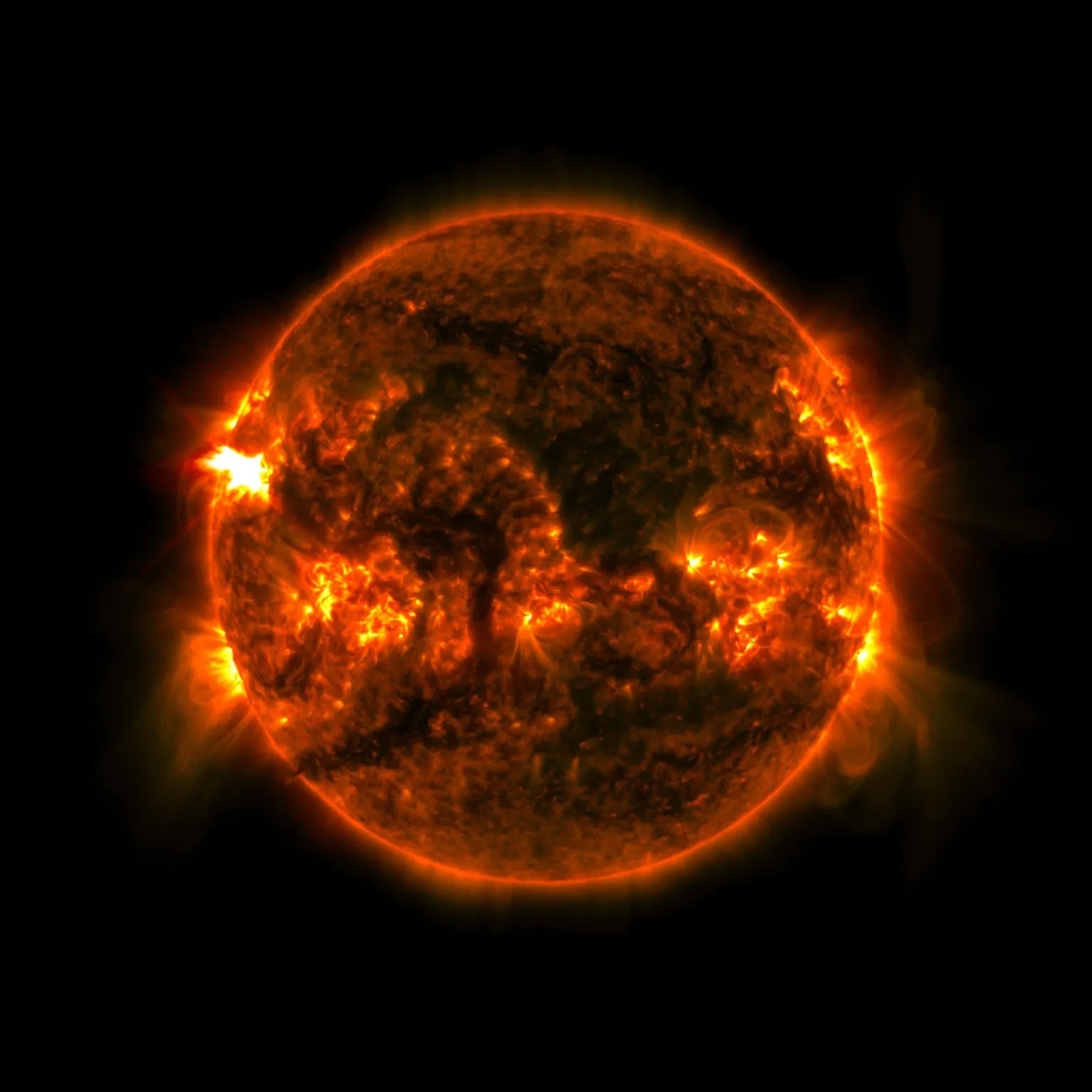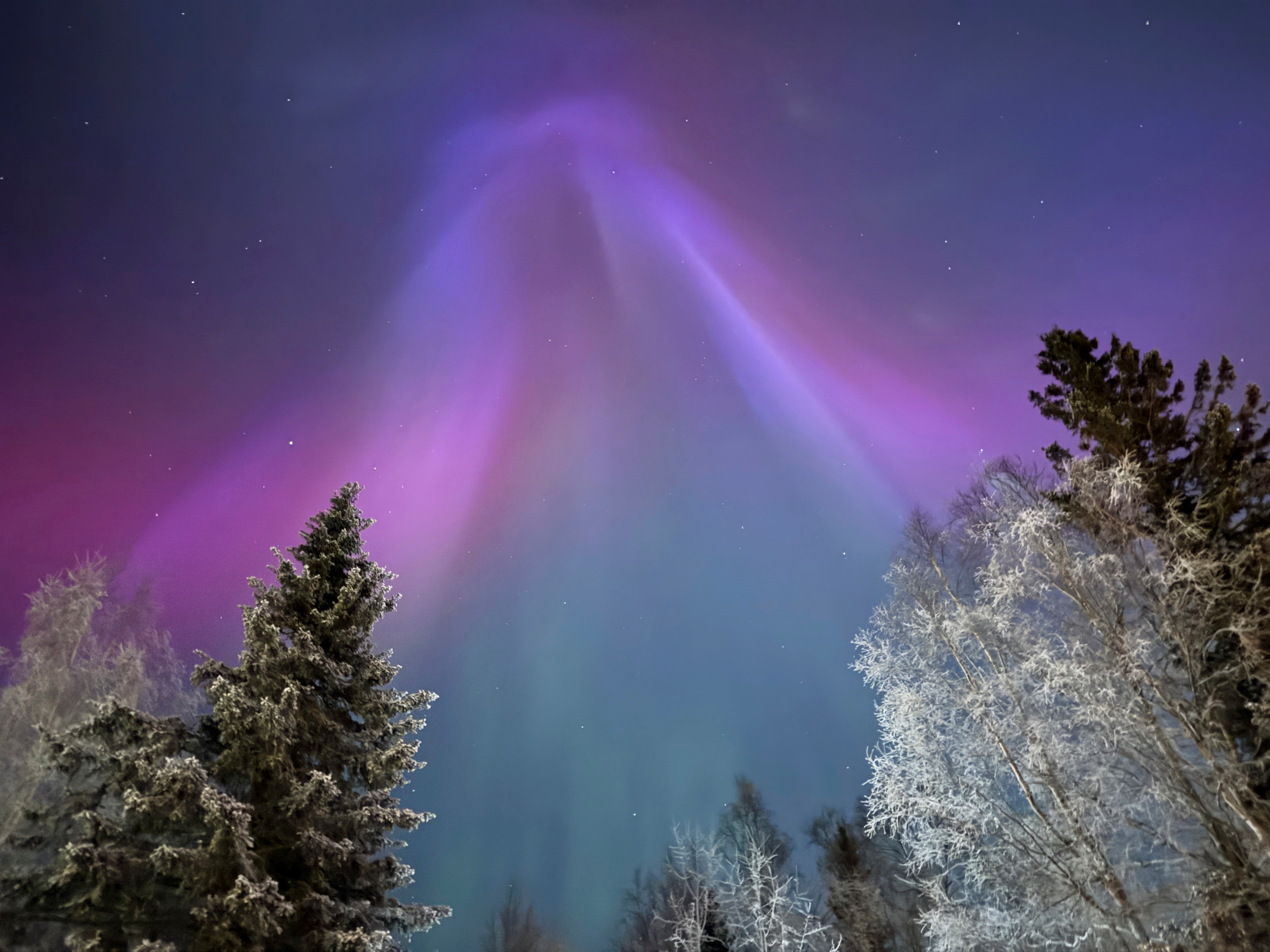Northern lights could be visible again in the US as another new flare erupts from the sun
There is a great chance of northern lights this weekend — especially at high latitudes
Your support helps us to tell the story
From reproductive rights to climate change to Big Tech, The Independent is on the ground when the story is developing. Whether it's investigating the financials of Elon Musk's pro-Trump PAC or producing our latest documentary, 'The A Word', which shines a light on the American women fighting for reproductive rights, we know how important it is to parse out the facts from the messaging.
At such a critical moment in US history, we need reporters on the ground. Your donation allows us to keep sending journalists to speak to both sides of the story.
The Independent is trusted by Americans across the entire political spectrum. And unlike many other quality news outlets, we choose not to lock Americans out of our reporting and analysis with paywalls. We believe quality journalism should be available to everyone, paid for by those who can afford it.
Your support makes all the difference.The northern lights could once again grace US skies over the coming days.
A minor geomagnetic storm is projected to impact Earth on Saturday and Sunday following the effects of a recent coronal mass ejection: plasma and magnetic field that is expelled from the sun.
Recent activity could make the celestial spectacle visible as far south as northern Maine and Michigan, according to a recent map. Multiple states saw the multi-colored light show from a severe storm on New Year’s Eve and Day.
Minor-to-moderate radio blackouts due to solar flare activity are also likely through Sunday, according to the National Oceanic and Atmospheric Administration’s Space Weather Prediction Center.
A solar flare is an intense burst of radiation or light on the sun. Solar flares are the most powerful explosions in the solar system — and the biggest ones can have as much energy as a billion hydrogen bombs.
The center said this activity was M-class, or medium level.
However, just a few hours after the three-day forecast was issued, NASA announced that the sun had emitted a strong flare early Friday morning.

It was classified as an X1.2 flare. X-class flares are the strongest, and powerful X-class flares have the ability to create world-wide blackouts.
Solar flares are ranked by their strength, with each letter representing a ten-fold increase in energy output. The flares are also grouped by subdivisions within each letter class, on a scale from 1 to 9.
“Flares of this magnitude in and around solar maximum are generally not common, although not necessarily unusual,” the center noted.
The advisories come during the sun’s “solar maximum” period, when the sun becomes more active and stormy.
In May of last year, multiple coronal mass ejections, created the strongest geomagnetic storm to reach Earth in two decades and what is potentially among the strongest displays of auroras in the past 500 years.

Flares can trigger geomagnetic storms when a coronal mass ejection travels through space and interacts with Earth’s magnetic field. The northern lights — light produced when particles from space collide with atoms and molecules in the upper atmosphere centered on Earth’s magnetic pole —are a manifestation of geomagnetic storms.
“The collisions produce light much like how electrons flowing through gas in a neon light collide with neon and other gasses to produce different colored light bulbs,” the center explains.

Join our commenting forum
Join thought-provoking conversations, follow other Independent readers and see their replies
Comments